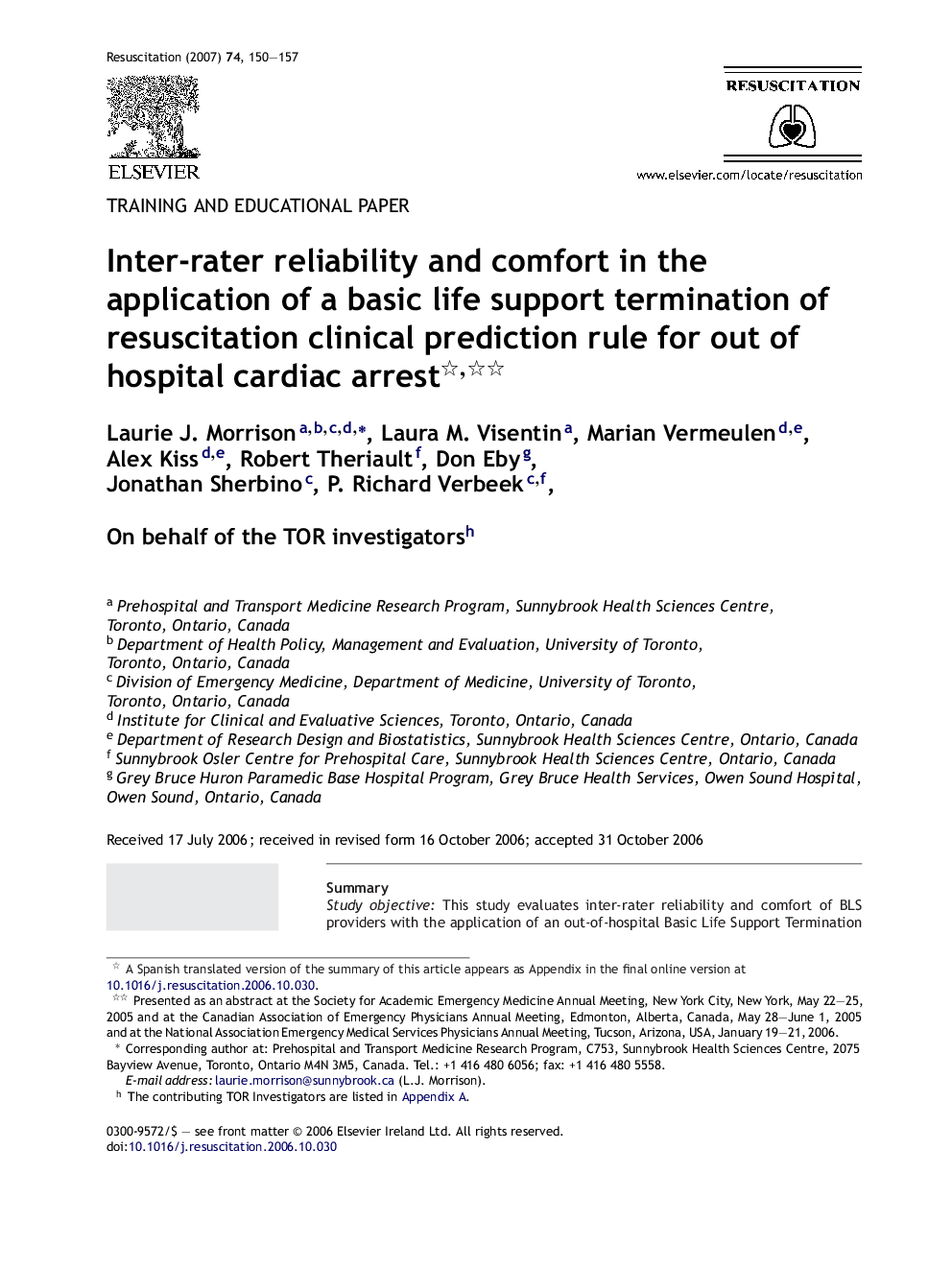| کد مقاله | کد نشریه | سال انتشار | مقاله انگلیسی | نسخه تمام متن |
|---|---|---|---|---|
| 3010961 | 1181538 | 2007 | 8 صفحه PDF | دانلود رایگان |

SummaryStudy objectiveThis study evaluates inter-rater reliability and comfort of BLS providers with the application of an out-of-hospital Basic Life Support Termination of Resuscitation (BLS TOR) clinical prediction rule. This rule suggests that continued BLS cardiac resuscitation is futile and can be terminated in the field if the following three conditions are met: (1) no return of spontaneous circulation; (2) no shock given prior to transport; (3) cardiac arrest not witnessed by EMS personnel.MethodsProviders hypothetically applied the rule and rated their comfort level on a five-point Likert-type scale, from “very comfortable” to “very uncomfortable” during the prospective validation of a BLS TOR clinical prediction rule in out-of-hospital cardiac arrest conducted in 12 rural and urban communities [Morrison LJ, Visentin LM, Kiss A, et al. Validation of a rule for termination of resuscitation in out-of-hospital cardiac arrest. New Engl J Med 2006;355(5):478–87]. A Kappa score measured agreement between providers and compared to the correct interpretation of the rule.ResultsWe compared mean comfort levels of providers who interpreted the rule correctly versus incorrectly. Of 1240 enrolled cases, 1184 (95.5%) had paramedic attendant forms and 1211 (97.7%) had driver forms and 1175 (94.7%) had both. Kappa for interpretation agreement between driver and attendant was 0.90 (95% CI, 0.87–0.92); between attendant and correct interpretation of the BLS TOR clinical prediction rule, 0.88 (95% CI, 0.85–0.91); between driver and correct interpretation of the BLS TOR clinical prediction rule, 0.88 (95% CI, 0.85–0.91). For instances in which both providers applied the rule correctly (607/635 [95.6%]), the providers were significantly more comfortable (χ2(4) = 30.5, p < 0.0001) than those instances in which they did not (28/635 [4.4%].ConclusionsThe vast majority of providers were able to apply the BLS TOR clinical prediction rule correctly and were comfortable doing so. This suggests that both reliability and comfort will remain high during routine application of the rule when paramedics are well trained as users of the rule.
Journal: Resuscitation - Volume 74, Issue 1, July 2007, Pages 150–157